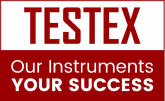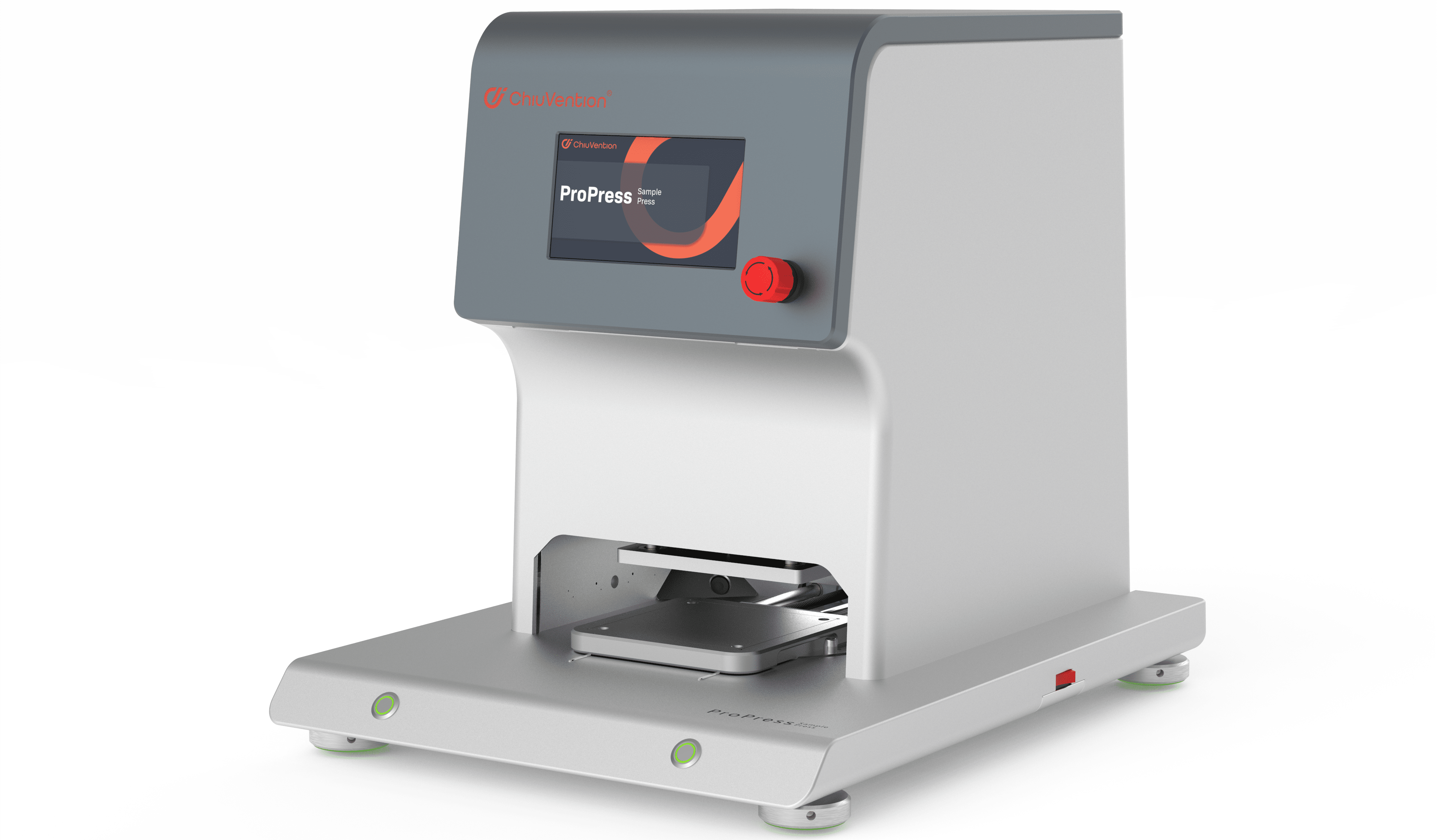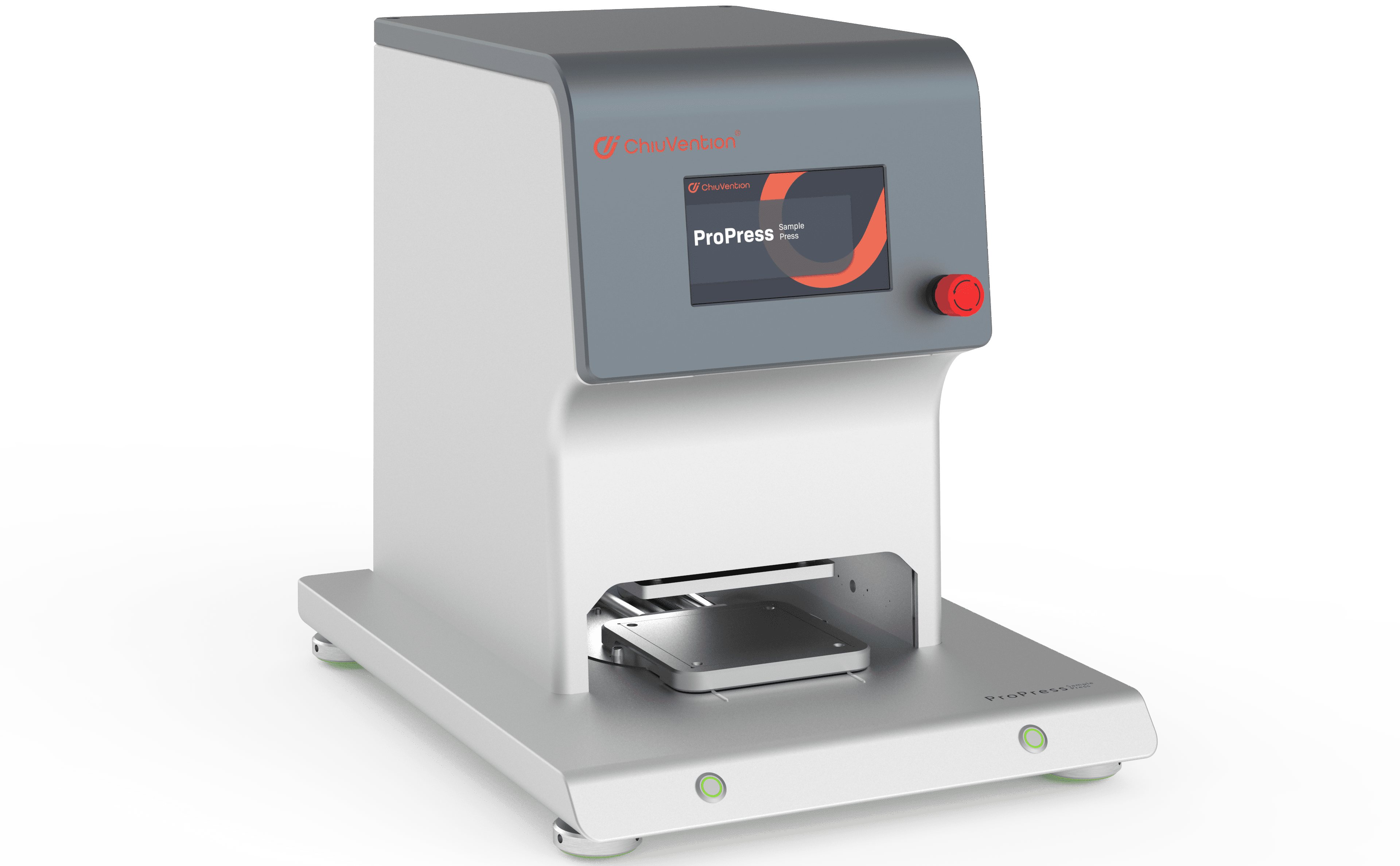ProPress Sample Press | A new machine developed by the sister company ChiuVention.
The ProPress Fabric Sample Cutting Machine cuts the samples into small pieces (e.g. 5×5 mm) within 8 seconds automatically and it can also cut multiple layers of fabric in a single pass. This digital press fabric-cutting machine is servo-driven and runs without an air source and oil pressure. It can be placed on the table for its small size. ProPress fabric swatch cutter is applicable for formaldehyde, pH, and other tests of fabrics, yarns, leather, plastics, and other flexible materials.
By using the ProPress Fabric Sample Cutting Machine, the work efficiency of cutting samples increases by more than 80%, which is 6 times manual shearing. Besides, we also provide other types of fabric sample-cutting machines.
Description
The working principle of the ProPress Sample Cutting Machine
Lay the sample flat on the plate, and press the button with both hands, then the plate will enter and the sample cutting machine automatically presses and cuts the samples. When the cutting press is finished, the ProPress textile sample cutting machine automatically activates a strong air-cleaning system to blow away any fibers and debris left behind, ensuring that the samples are not mixed.
The operator can observe whether there is any fabric sample residue through the high-definition camera equipped with ProPress Sample Cutter from the operation screen, and can manually start the cleaning program again.
In addition, the ProPress automatic fabric cutting machine ensures your safety: start-up with two hands, and the work area is equipped with a light barrier to prevent accidental injury. Applicable for various cutting sizes such as 3×3 mm, 5×5 mm,10×10 mm, or the dimensions can be customized.
More accurate sample preparation, for more reliable test results.
Traditional manual cutting of fabric samples can easily lead to large differences in sample shape and size, which can cause insufficient dissolution, thus affecting the reliability of the test. However, the ProPress swatch cutter machine cuts samples by pressing, which is precise and fast. Therefore, the highly consistent samples ensure the fabric test results of formaldehyde, pH value, etc. more reliable.
Faster sample preparation, saving more than 80% of the time.
The ProPress Fabric Sample Cutting Machine presses samples in several seconds per operation, compared to at least 60 seconds for manual cutting, making it valuable for large-scale fabric testing labs that prepare large numbers of chemical test samples every day.
Ensures the pass rate of textile samples throughout the whole process.
The ProPress fabric swatch cutting machine is equipped with a self-cleaning system that blows air to clean all kinds of fiber debris generated during the cutting process, and a built-in high-definition camera (2 megapixel, 1920×1080 resolution) used for observing the cleaning and ensures that there is no mixing between samples.
The Specification of ProPress Sample Cutting Machine
Machine 1. CV.518.01 CV518 ProPress Sample Press
Press thickness 0.1mm*4mm
Press pressure 5T (adjustable force as 1T, 2T, 3T, 4T, 5T, to improve the service life of the cutter)
Power supply 220V 5A /110V 10A 50/60Hz
1200W
Net weight 100kg
Net size 600*450*530 mm (L*W*H)
Gross weight 126kg
Packing size 740*550*740 mm (L*W*H)
Standard accessories (mode and dimensions)
Matting 4.M.011 129 mm*129 mm*6 mm 6pcs
Die 2. Z.CV518.01 5 mm *5 mm(Press area 100mm*100mm) 1pc
Pallet 2. Z.CV518.03 160 mm*160 mm*16 mm 2pcs
Optional accessories (mode and dimensions)
Die 2. Z.CV518.02 3 mm *3 mm (Press area 80mm*80mm)
Hoover 7.XCQ.001 220V 1200W
Hoover 7.XCQ.002 110V 1200W
Other customized die dimensions limits: max. diameter 113 mm, min. diameter 4 mm.
Wear parts and consumables of Fabric Sample Cutting Machine
Matting 4.M.011 129 mm*129 mm*6 mm
(Forward and reverse sides are available)
Die 2. Z.CV518.01 5 mm *5mm
(Press surface 100mm*100mm or customized dimensions)
Installation conditions of Fabric Sample Cutting Machine
Equipped with a socket 220V or 110V, compressed air (or not), work surface area of not less than 700mmx1000mm
Applicable Tests and Standards of Sample Cutting Machine
pH test ISO 3071 GB/T 7573
Formaldehyde ISO 14184.1 GB/T 2912.1
Heavy metal GB/T 17593.1/2/3
Azo FZ/T 01133 GB/T 17592
You must be logged in to post a review.
1 Prepare the specimen, ensuring it is a square with dimensions no smaller than 100mm x 100mm and no larger than 150mm x 150mm.
2 Turn on the device. After turning it on, the device will automatically reset and be in a standby state.
3 Place the specimen on the white tray, then simultaneously press both buttons. The tray will automatically enter the device, and the cutting process will begin.
4 After cutting is complete, the tray will automatically extend out. Remove the tray.
Care and Maintenance
1 Regularly maintain cleanliness and hygiene of the equipment and control system.
2 Prevent exposure of the machine or control system to high temperatures, excessive humidity, dust, corrosive substances, water, etc.
3 Perform regular inspections to maintain the integrity of parts and components.
4 Conduct regular calibration of the instrument to ensure measurement accuracy.
5 Non-professional maintenance and calibration personnel should not dismantle the instrument. After each repair, metrological performance verification must be conducted to prevent instrument inaccuracies.
If you want to know more about Propress digital fabric cutting machine prices, or even more, please contact us.
[contact-form-7 id="16355" title="Inquiry"]
The ProPress is for cutting test samples from textiles, yarns, leathers, and plastics, etc.
Can Propress directly conduct formaldehyde, pH, azo, and heavy metals tests?
No, it’s a cutting press tools for various types of sample making that needs to conduct formaldehyde, pH, azo, heavy metals tests.
To conduct the above tests, you need to purchase other instruments.
What is the difference between Propress and SmartCut?
The Propress, a digital fabric sample press cutter, is designed specifically for preparing samples like textiles and leathers for pH testing, capable of punching and cutting them into 5x5mm pieces in under 8 seconds.
In contrast, the SmartCut can complete fabric sampling in 3 minutes and features advanced sample-cutting software. This allows users to choose from various cutting patterns and sizes tailored to specific projects or testing standards, providing enhanced flexibility and customization.
What are the differences between the Propress sample press CV518 and the Pneumatic Sample Press Cutter TF515?
The Propress sample press CV518 is for cutting test samples from textiles, yarns, leathers, and plastics. The samples are used for tests of formaldehyde, pH, azo, heavy metals tests.
Pneumatic Sample Press Cutter TF515 can be used for a wide range of applications such as sample cutting for adhesive and label testing, film and foil testing, and more.
What are the different types of fabric cutting tools available for sample preparation in textile testing?
There are typically five main types of specimen cutting machines in textile testing:
- Manual Scissors/Shears – Basic hand-operated tools for small-scale sample cutting.
- Rotary Cutters – Precision tools used for cutting fabric with clean, smooth edges.
- Die Cutting Machines – Machines that use pre-shaped dies to cut fabric samples consistently.
- Pneumatic or Hydraulic Presses – automatic cutting machine for fabric that use air or hydraulic pressure for consistent and precise cuts.
- Laser Cutters – High-precision tools that use laser technology to cut various fabrics with extreme accuracy.
Each tool is selected based on the type of fabric and the precision needed for the testing process.
Want to know which version fits your testing requirements? Please visit this page.
What are the pH requirements for different types of fabrics in common standards?
- Textiles for infants and young children in Category A: pH should be between 4.0 and 7.5.
- Textiles in direct contact with skin: pH value should be between 4.0 and 8.5.
- Textiles not in direct contact with skin: pH value should be between 4.0 and 9.0.pH.
What are the sampling rules for formaldehyde, pH and azo tests?
- Products with a colour pattern, cut and mix as one sample.
- Products with regular patterns are sampled in a circular pattern, cut up and mixed as one sample.
- Products with a large pattern cycle, sampled in proportion to the area of the ground and flowers, cut and mixed as a sample.
- Independent pattern of products, the pattern area can meet a sample, the pattern of a separate sample;
- Pattern is very small less than a sample, the sampling should include the pattern, it is not appropriate to cut from a number of samples and then combined into a sample.
- Only carcinogenic aromatic amine dyestuffs shall be tested where the pattern is small.
- For products that can be manually layered, the samples shall be taken in layers and measured separately.
- For products that cannot be manually layered, the sample should be taken as a whole.
How to ensure the PH value of textiles is qualified?
- Strictly control all aspects of the dyeing and finishing process, including pre-treatment, dyeing, printing, finishing and washing.
- Increase the rinsing power of water washing on the surface of textile by increasing the ratio of water washing bath, so as to improve the stability of pH value.
- Adjust the pH of textiles by using acids such as glacial acetic acid and citric acid for neutralisation.
- The storage environment should be isolated, ventilated and dry, and appropriate packaging measures should be taken to avoid environmental influence or staining.




Reviews
There are no reviews yet.